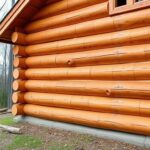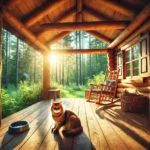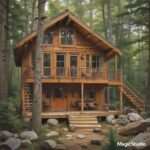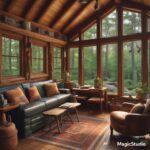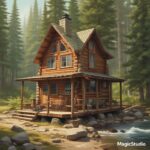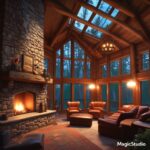The tiny living phenomenon has become a runaway success in incredible numbers, people are looking for a simpler, more natural way of life. Building an ultrasmall cabin is one of the ultimate ways to participate in this phenomenon, making a satisfying compromise between independence, practicality, and the art of doing. Designing a practical, aesthetically appealing tin house, however, demands smart planning and decision-making.
This characteristics guide will walk you through the basic steps one needs to create and construct a tiny cabin, for a weekend getaway or a permanent residence.
1. Understand the Philosophy of Tiny Living
Don’t even begin to build without first contemplating what tiny living means to you. It’s not just a matter of tiny houses, but focussing, really, on an easier life and giving far more attention to something precious. Tiny living emphasizes sustainability, minimalism, and maximizing functionality.
Consider your goals—whether they involve reducing your ecological footprint, saving money, or fostering a stronger connection to nature—and use these as a foundation for your cabin design.
2. Choose the Right Location
Where exactly the small cabin is located plays an extremely important role in its effectiveness. Begin with an examination of local building codes and zoning restrictions, which may restrict the location and temporal construction of structures. Some locations have size restrictions and/or minimum area limitations on the footprints of tiny house structures.
Weigh the potential utility availability, natural exposure, and risk factors (flooding and extreme weather events) in making your plot choices. The peace of a woodland scene or a lake can help to make your small house magical.
3. Decide on a Floor Plan
Space saving is the engine and soul of tiny living. Given proper planning a 200-square-foot cabin will appear spacious.
When designing your layout: When designing your layout:
Focus on versatile rooms, such as a living room that also becomes a dining room.
Provision of pre-fitted furniture, e.g., storage bench or foldaway tables, to maximize use of the floor area.
The kitchen, bathroom, and bedrooms are useful and comfortable.
Online design software or small home builders may offer on-sale floor plans that are suitable to a range of needs.
4. Select the Right Building Materials
The construction materials you select will all affect the life, look, and home of your cabin. For a naive effect, materials, such as reclaimed wood or stone, should be used, and natural materials such as reclaimed wood or stone which make a naive effect, are candidates. Not only do they fit well with the idea of little living, but also they can generate a feeling of intimacy and warmth.
To become more up to date the timber is to be used in combination with contemporary metal brights or concrete. Make sure your items are waterproof, especially, in extreme environments.
5. Decide Between DIY or Professional Help
Construction of small cabins is a potentially good DIY project, but, it is not the right fit for everyone. Having previous experience or just generally liking hands-on work, may save money and give it a personal feel to build it yourself.
However, if even a novice is on board with a packed schedule, a professional builder is truly prudent to employ. Certain companies are making a name for themselves in the world of tiny houses and can personalize the design to the size of your specifications.
6. Focus on Energy Efficiency
The natural advantages of small cabins, of course, also put them in favor of energy-saving potential houses, however, those can be reduced further in terms of carbon footprint. Consider these features:
- Solar panels for off-grid energy.
Excellent insulation for continuous and consistent comfortable indoor temperatures.
LED lighting and energy-saving devices for reducing the consumption of electricity.
Good energy solutions are not just important for a sustainable living standard, but also to cut utility costs.
7. Plan for Water and Waste Management
Water/waste management is a huge challenge of tiny living, even more so if your tiny home is an off-grid little cabin. The system, which varies with the location, should be installed and configured locally:
In the case of water, consider solutions such as a rainwater collection system, drilling a well, or connecting to the public water supply system.
Composting toilets are a standard solution for waste ecologically acceptable) and septic tanks are a solution in cases when plumbing is used (nonconventional).
8. Design for Comfort and Functionality
A tiny cabin doesn’t have to sacrifice comfort. No matter how small or large, thoughtful design can result in a comfortable and functional feeling in any space.
Here are some tips: Here are some tips:
- Lofted sleeping areas free up valuable floor space.
Use pale colors and as much natural light as possible to feel as if the environment is larger and increase the brightness.
Buy good quality storage solutions so that things will not pile up.
After all, every item in your cabin has a job to do—select pieces that serve as both functional and aesthetic.
9. Personalize Your Space
The best part of a tiny cabin is the freedom to customize it to fit your style and way of life. Integrate individual elements that express your personality and give the cabin a home vibe.
For example: For example:
Furnish with rustic or modernistic design elements to individual taste.
A cozy reading perch or a small home office if you work from home.
The application of pleasurable items, i.e., art, flowers craft articles, etc.
10. Embrace Outdoor Living
Compact cabin often takes to its living space from the property to the backyard or outdoors and this space can give a chance to feel oneness with nature. Design a deck that integrates perfectly with the cabin and improves your overall experience.
Ideas include: Ideas include:
- A deck or patio for lounging and dining.
- A fire pit for gathering under the stars.
An unbroken garden/natural landscape aesthetic that is intrinsically embedded in the site.
In addition to more usable floor space, outdoor living contributes to the richness of the experience of living in a small space.
Conclusion
The DIY construction of a small cabin is more than a construction project, it is a crucial step in moving from a more primitive way of life to a deliberate way of life. It is possible to build a very small house, which is not only functional but also aesthetically pleasing, by carefully selecting a location, designing a good layout, and taking sustainability into account.
Whether a haven for quiet retreat or committed full-time minimalist living, your cabin will be a reflection of your priorities and ideals. Just do it small, dream big, and be happy living in your little paradise.


